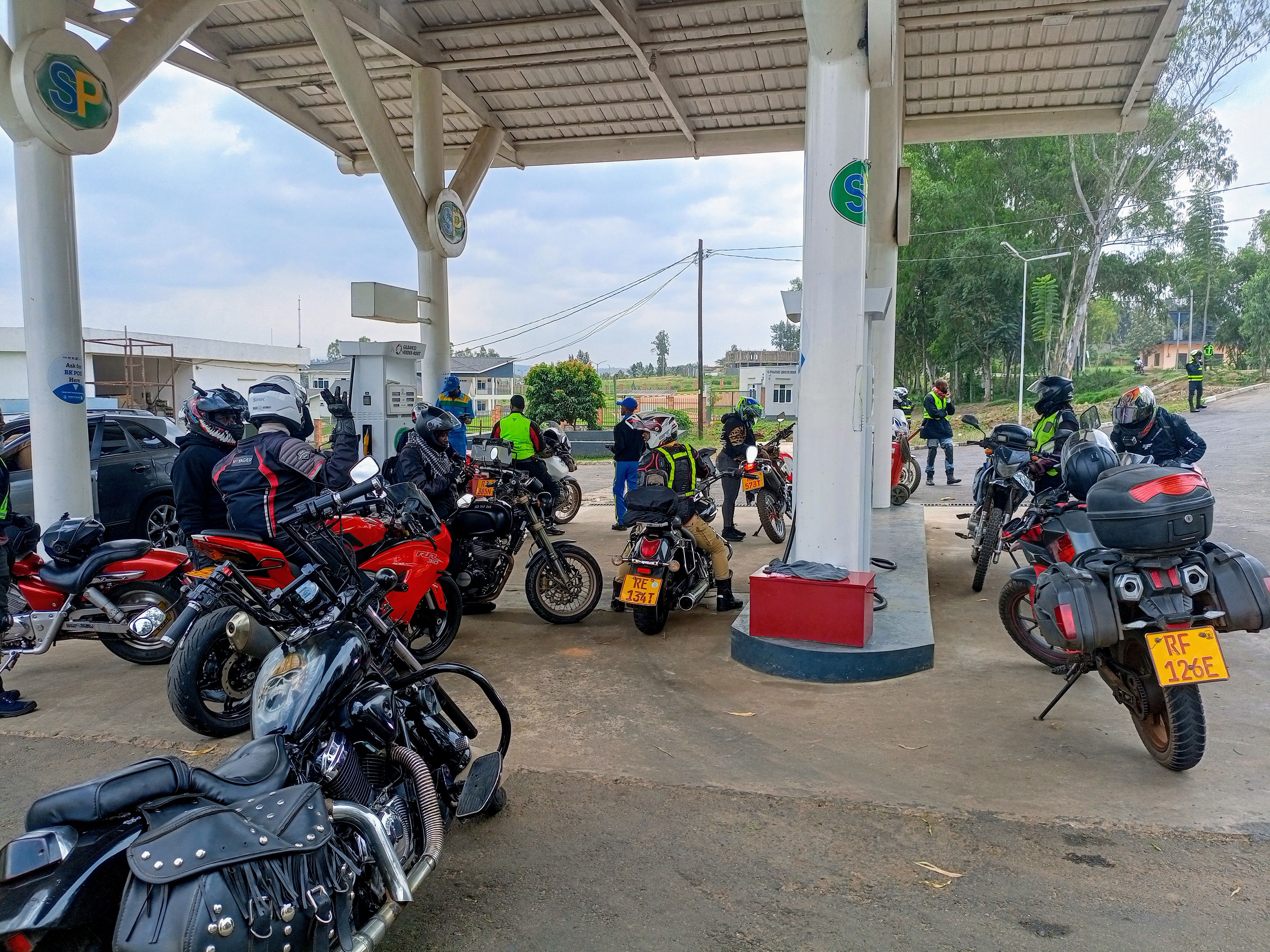Ride to Remember: Bikers Pay Tribute to Victims at Kiziguro Genocide Memorial
On Sunday, I joined bikers from four Kigali-based clubs for a journey that combined adventure with deep purpose. Our destination was Kiziguro Genocide Memorial. Located in Gatsibo District, this site is the final resting place of more than 20,000 victims of the 1994 Genocide against the Tutsi.
We left Kigali at 7:30 in the morning. As we tore through the quiet stretches of countryside, the explosive rumble of our engines broke the stillness like a rolling storm. The symphony of revving motors created a fusion of sound that echoed across the hills. Along the way, the commotion we were causing turned heads and sparked excitement among the children.
Our first stop was Imigongo Art Center in Kayonza District. After refueling our bodies and stretching our muscles, we proceeded to Gatsibo.
Upon arrival, we were welcomed by Mtambo Damien, president of Ibuka in Kiziguro Sector, and Hategekimana Achille Samson, the district's Director of Good Governance. Their presence underscored the deep commitment of the community and local leadership to preserving the memory of the victims and ensuring that the lessons of the past continue to guide the future.
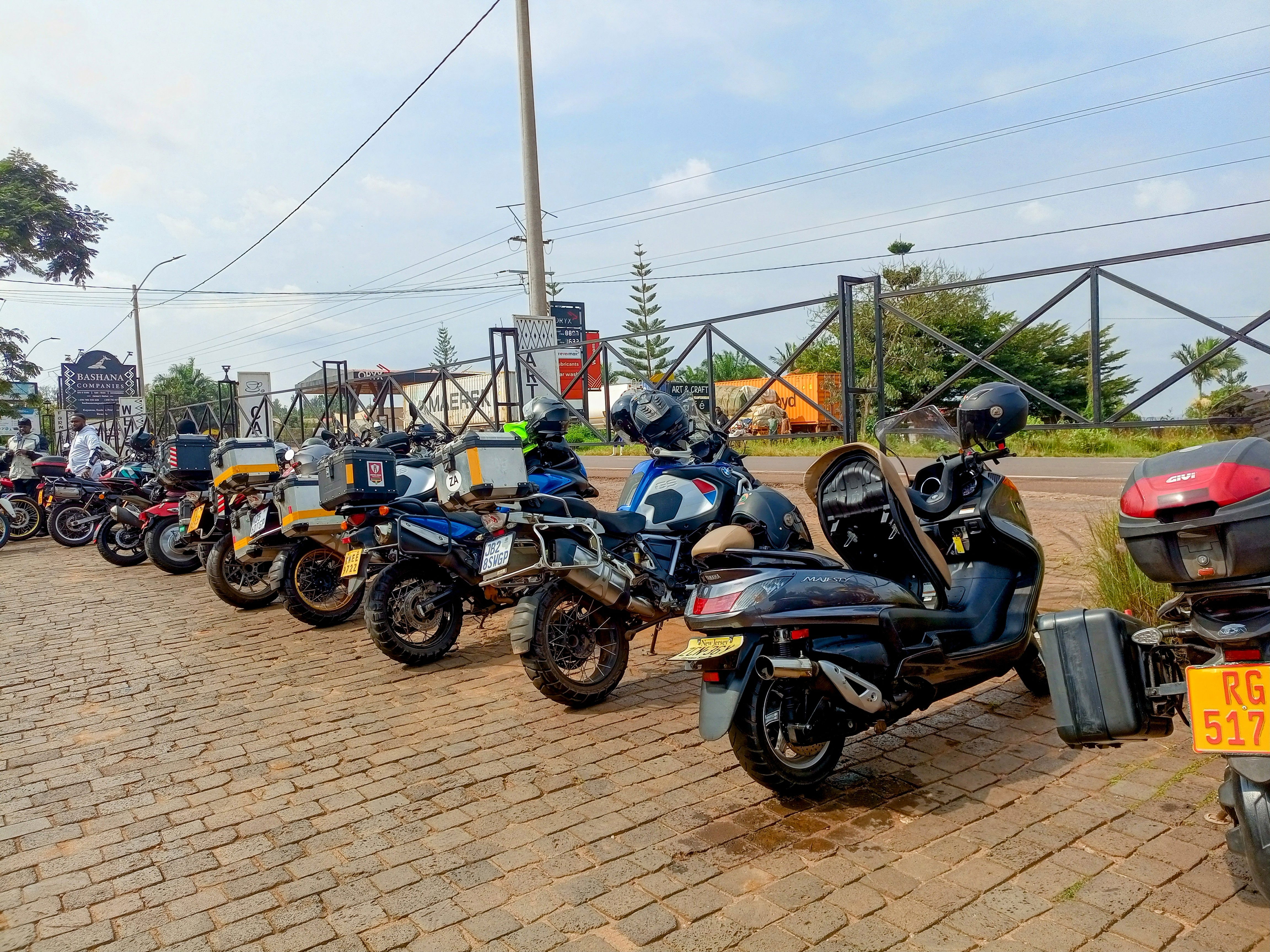
Our first stop was Imigongo Art Center in Kayonza District. After refueling our bodies and stretching our muscles, we proceeded to Gatsibo.
At a glance, Kiziguro Genocide Memorial Site is a modern edifice. If you’ve ever driven along the Kayonza–Nyagatare highway, you’ve likely caught a glimpse of its bold facade. Behind the architectural marvel lies the painful memory of the darkest chapter in our history.
Plans are underway to equip the main building with materials that will enhance the visitors' learning experience. The facility will serve not only as a tribute to the past but also as a space for education, truth-telling, and collective reflection.
There are two mass graves on the premises and a small, hut-like structure made of dark glass walls. We will find out later what is inside the tinted walls.
After welcoming remarks, we laid wreaths and observed a minute of silence, honoring the victims with stillness and reverence. Then Mr. Mtambo guided us through history, recounting the horrors that once unfolded on the very ground we had stepped on.
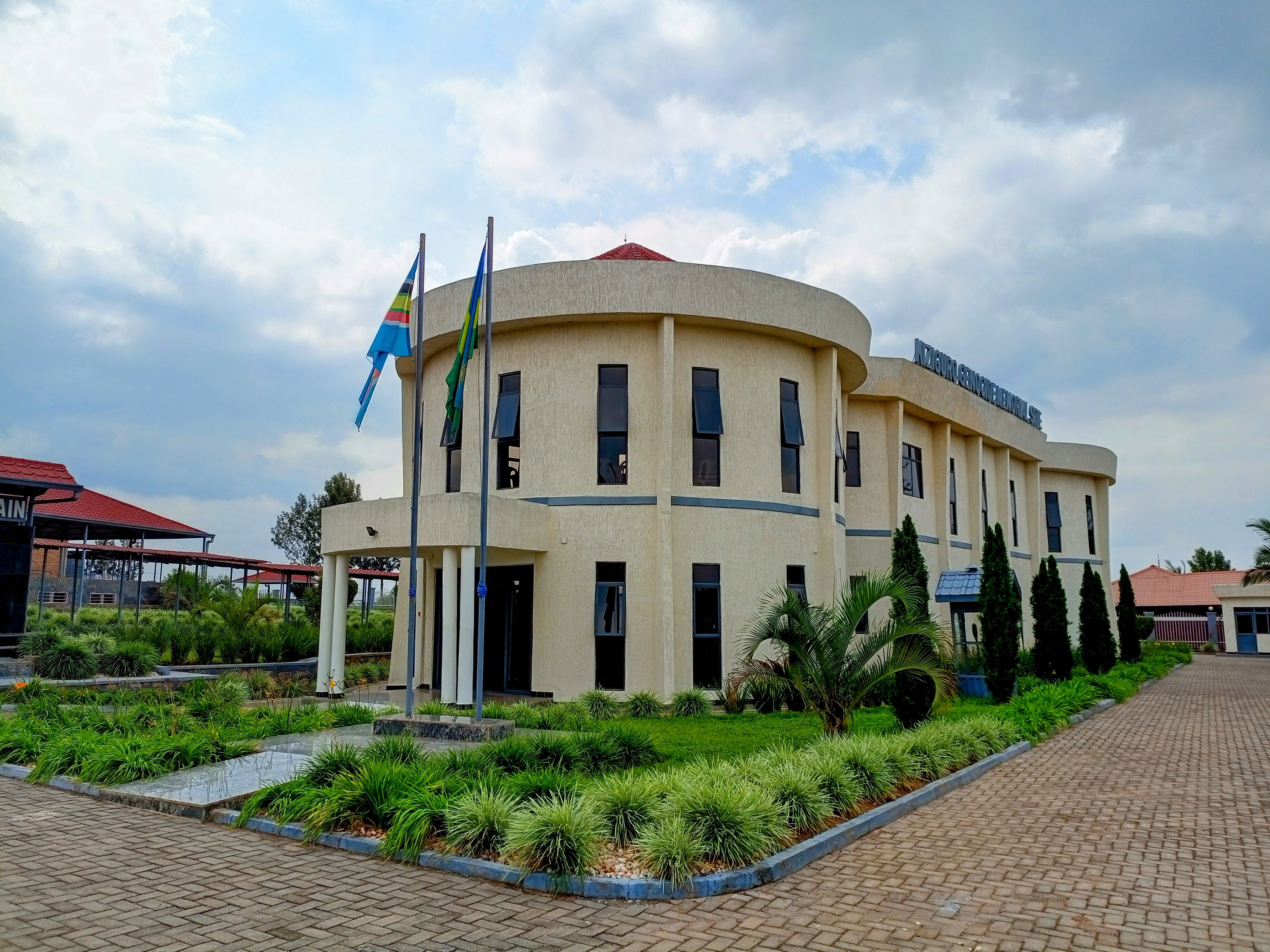
Plans are underway to equip the main building with materials that will enhance the visitors' learning experience.
Although the genocide took place in 1994, the killings here began much earlier. Before Rwanda's administrative reforms, Kiziguro Sector was in Commune Murambi, Byumba Prefecture. By 1992, Gatete, the infamous bourgmestre of Murambi, was already orchestrating heinous acts. He killed even his own colleagues—sixteen of them—and trained 140 men, molding them into the leadership core of the Interahamwe militia.
When some organizations began to expose him, Gatete was reassigned to Kigali. But the relocation didn’t slow him down. Instead, he ramped up preparations for the mother of all massacres: compiling lists of Tutsis, mobilizing killers, and promoting the genocide ideology.
When hell broke loose in April 1994, Gatete joined forces with local leaders who had fled areas already liberated by the Rwandan Patriotic Army (RPA) soldiers, popularly known as Inkotanyi. Between April 7th and 13th, about 30,000 Tutsis were slaughtered in Murambi alone.
While still processing the harrowing history, we were ushered toward the glass-walled hut mentioned earlier. Because we were a large group, we entered five at a time, stepping quietly into the structure. Inside, a deep pit is preserved, with a safety railing separating it from visitors. The story behind this hole is one of unimaginable cruelty.
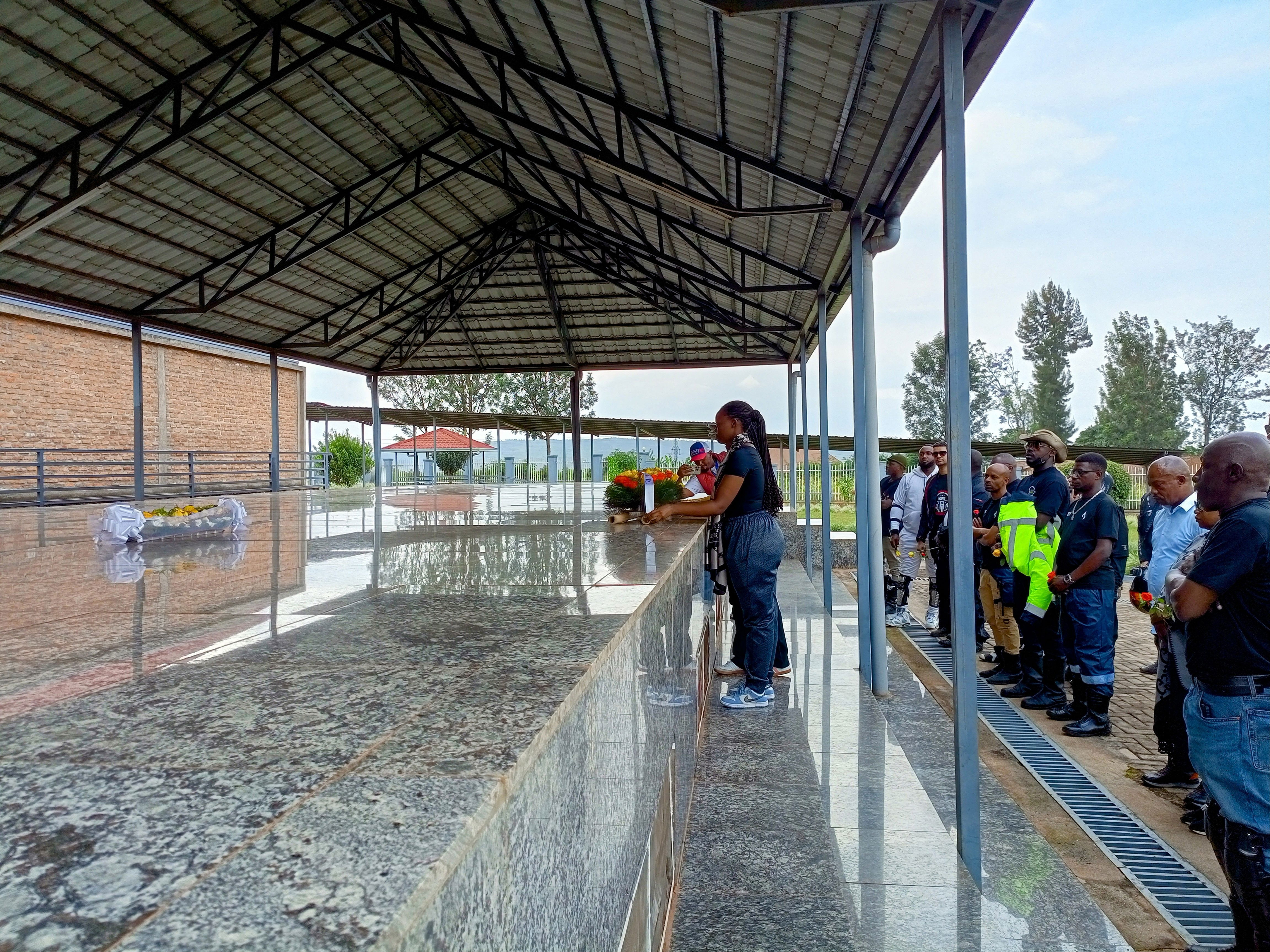
After welcoming remarks, we laid wreaths and observed a minute of silence, honoring the victims with stillness and reverence.
In 1992, when Gatete’s evil forces went on a killing spree, many Tutsis sought refuge in a nearby church and survived. So in 1994, more than 6,000 Tutsis fled to that same church, trusting that no one would dare kill them in the house of God. Little did they know that the script had changed.
On April 11, Interahamwe militants violently stormed the church, unleashing a brutal massacre. The victims’ bodies were callously loaded into wheelbarrows and hauled to the pit, while others were dragged across the ground and thrown in. Young Tutsis were forced to carry the corpses to the pit themselves—a final, degrading burden—before they too were killed and cast into the same pit.
Although the perpetrators tried to finish off anyone still alive before throwing them into the pit, some victims ended up down there while clinging to life. By the time RPA soldiers reached Murambi, eleven people were found still breathing. Six of them are still with us today; the others later succumbed to their injuries and the overwhelming toll of emotional trauma.
Remember the mass grave where we laid wreaths earlier? That one is full and sealed. But a second grave remains open. To this day, the remains of more victims are still being discovered and brought here.
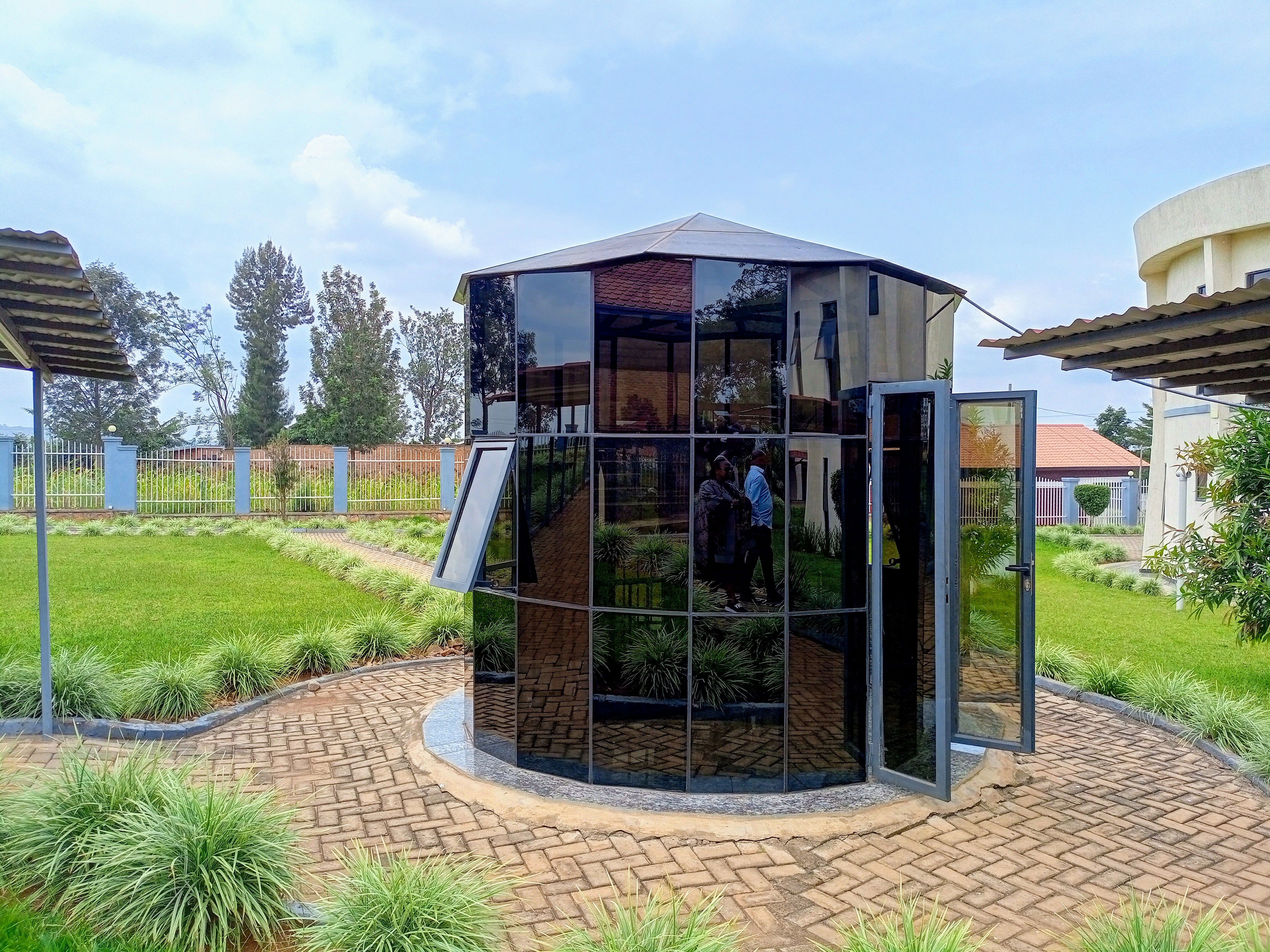
While still processing the harrowing history, we were ushered toward the glass-walled hut.
We entered that open grave. Once again, we observed a minute of silence. This time, amongst innocent souls. The pit in the hut part was hard. This last stop was even heavier—a raw, unfiltered confrontation with the scale of inhumanity that unfolded here. Surrounded by the silence of the dead and the weight of unfinished stories, we stood still, bearing witness to a past that must never be forgotten.
Then came a testimony from one of us. The leader of the bikers' delegation, Alphonse Buseruka, is a veteran Inkotanyi. He shared his personal ordeal helping to rescue survivors from the aforementioned pit. His chilling recollection laid bare the depth to which the nation had sunk into the abyss.
We took one last moment to reflect, each in our own way. For some, the day stirred old wounds. For others, it deepened understanding. For all of us, it reaffirmed our shared responsibility.
